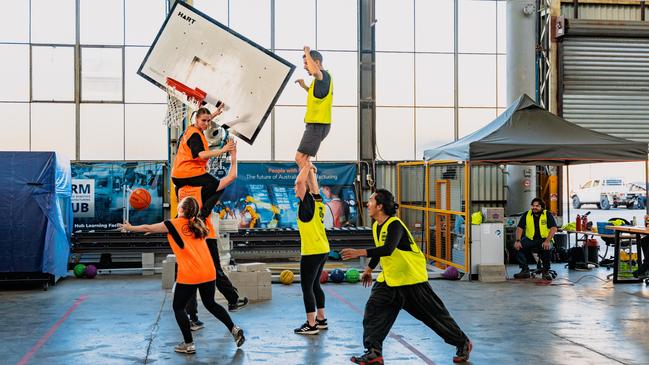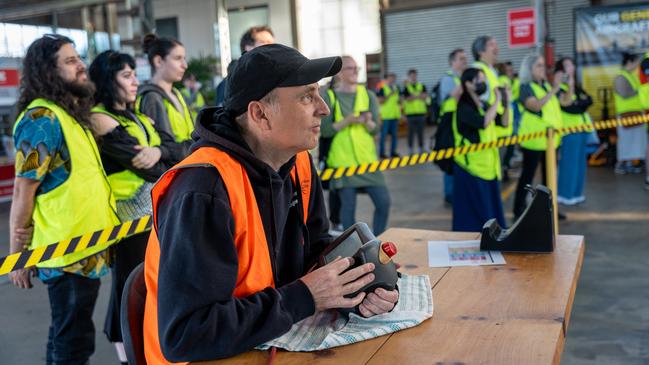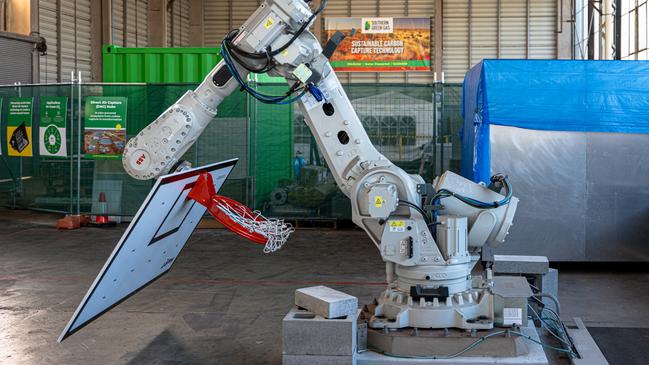Innovators: Robots taking over? Clearly you’ve not seen one try to open a door
We’re knocking on the door of a robotic revolution, but first we need to teach them how to open it.

Business
Don't miss out on the headlines from Business. Followed categories will be added to My News.
Anyone who thinks robots are going to take over just needs to watch one try to open a door. It’s hilarious, says Professor Jonathan Roberts, director of the Australian Cobotics Centre.
“Getting through a door is actually one of the hardest things to get robots to do,” he says. “It sounds ridiculous, but because you’ve got a door, and it’s got a door handle, it’s actually hard for a regular robot. The same goes for lifts when robots try to press the buttons.”
The challenge is so great the US-based Defense Advanced Research Projects Agency even held competitions to see which companies could build robots to make it through a door.
“It was all about humanoid robots doing things like going into imaginary factories or nuclear disasters and sending them in to turn off valves,” Roberts says. “One of the challenges was opening doors, and it’s just ridiculously difficult. You see these multimillion-dollar robots kind of getting up to the handle, missing it, and then just falling over backwards.”
Whenever someone asks whether robots will take over the world, Roberts tells them: “Well, not this year.”
Robots in their current form are far less exciting than science fiction makes them out to be. “Of course, it’s very industry-specific … we’re still waiting for home robots that are not vacuum cleaners,” Roberts says. “In manufacturing, these smaller collaborative robots are now becoming more popular.”

Collaborative robots, also known as cobots, typically look like desk-mounted robotic arms that are capable of lifting and moving items. “They are starting to be used around the world, and they’re getting easier to program,” Roberts says. “Traditionally, robots in manufacturing were set up to do one thing, but now cobots are being set up to do a task for a couple of hours before being programmed to do something else.”
With cobots able to be used for varied duties, they’ve become increasingly more attractive to smaller businesses, not just major organisations. “That seems to be going well, although it’s going a bit slower than everyone kind of predicted,” Roberts says.
The next big thing in the industry is humanoid robots that are built and developed to look and act like humans. While one might initially struggle to understand why companies build robots that replicate humans, Roberts says there’s an easy answer.
This is an article from The List: Innovators 2024, which is announced in full on October 18.
“There’s a very good reason to make humanoid robots, which is because we’ve built our world for human-sized things,” he says. “There are I don’t know how many companies, but a lot with very large investments – from who knows where – building humanoid robots, releasing prototype after prototype. Almost every few days or weeks, you see a new video of a very impressive humanoid robot.”
Any other style of robot would require serious changes to everything from the shape of a car to the doors in a house and even the buttons in a lift. In some cases, newer architecture is already being built to be more inclusive of a robotic future. One example, Roberts says, is in healthcare.
“There are some new hospitals that have been designed with particular places where mobile robots can drive to deliver and move things around,” he says.
You won’t see these robots walking the halls; rather, they’re used to move linen or deliver food, often in areas not accessible to patients or general staff. While robots don’t have feelings, some in the industry are trying to make them feel. Among them is Heba Khamis, the chief executive of Contactile, a Sydney-based firm developing tactile sensors designed to give robots human-like levels of dexterity and touch.

It’s a challenge that piqued her interest while working at the University of NSW as she completed a major project on human tactile neurophysiology.
“The human sense of touch – how do we feel slipperiness and friction, and why are we so good at picking things up with our hands?” she explains. “That project is what inspired the development of artificial tactile senses for prosthetics and robotics.”
Khamis and her Contactile co-founder received a grant from the university to conduct fundamental research on developing those senses, which they later spun out into a business.
Some of Contactile’s early products included two-prong – or finger – grippers, which Khamis has already been able to use to successfully complete the vexing challenge of getting a robot to open a door.
The start-up is still in the product-market fit stage, Khamis says, with its next task defining the product and working out how to package the technology so it can be embedded in robots to replicate human touch and allow them to perform “autonomous handling and manipulation tasks”.
“Existing robotic solutions are perfect for highly repetitive tasks, so that’s why robots are currently used in things like manufacturing,” she says.
The next evolution will be to build robots with the capacity to react and respond in real time, in what the industry calls “unstructured environments”.
“When we talk about the future of robotics, what we obviously want is for robots to do more things,” Dr Khamis says. “They need to operate in an environment where you can’t really predict everything that’s going to be happening. You need to be able to provide enough feedback to the robot so that it can make decisions on how to perform a task or what to do next.”
More Coverage
Originally published as Innovators: Robots taking over? Clearly you’ve not seen one try to open a door




